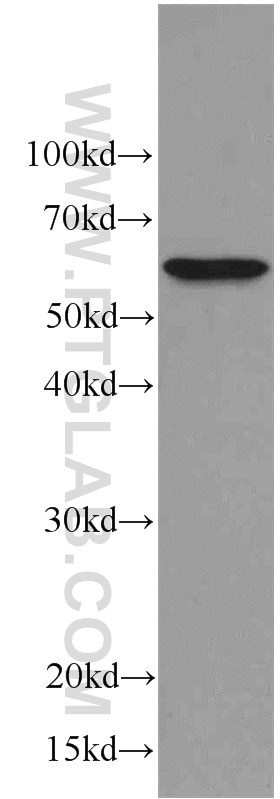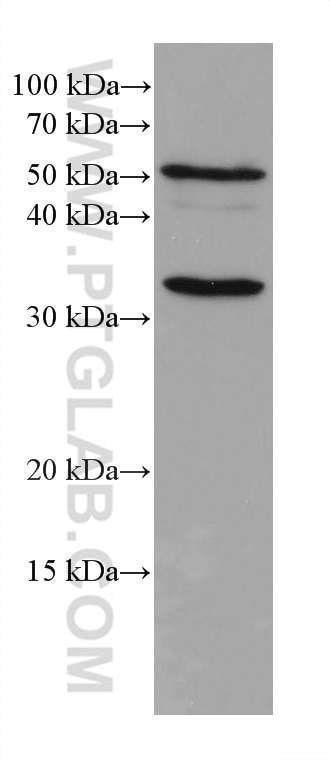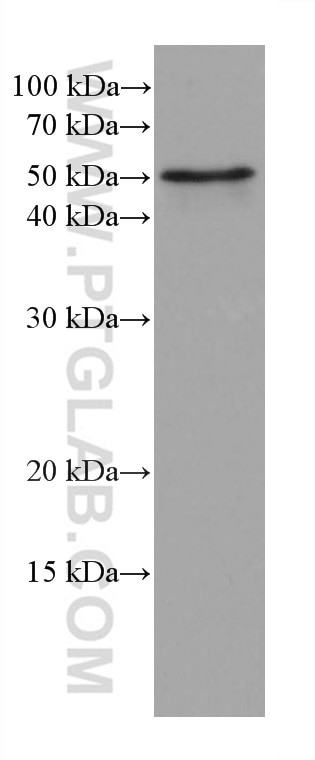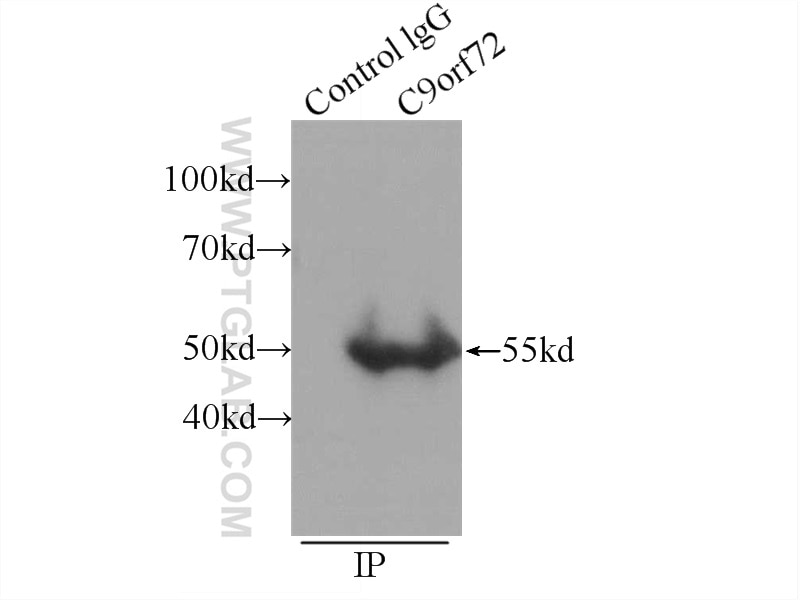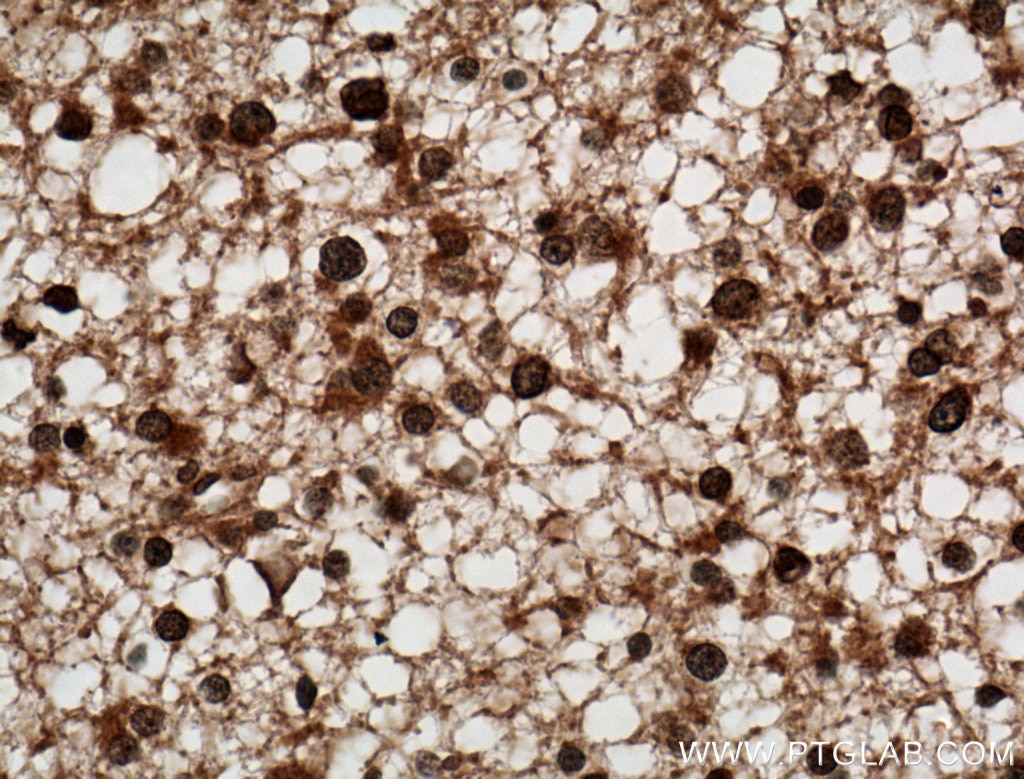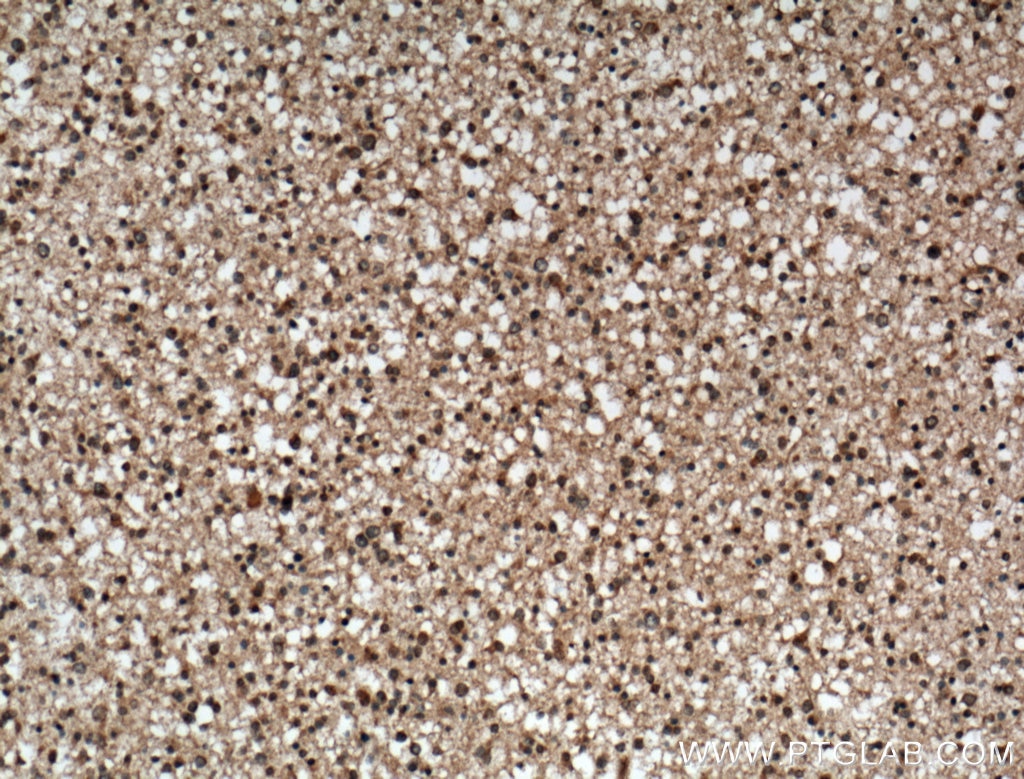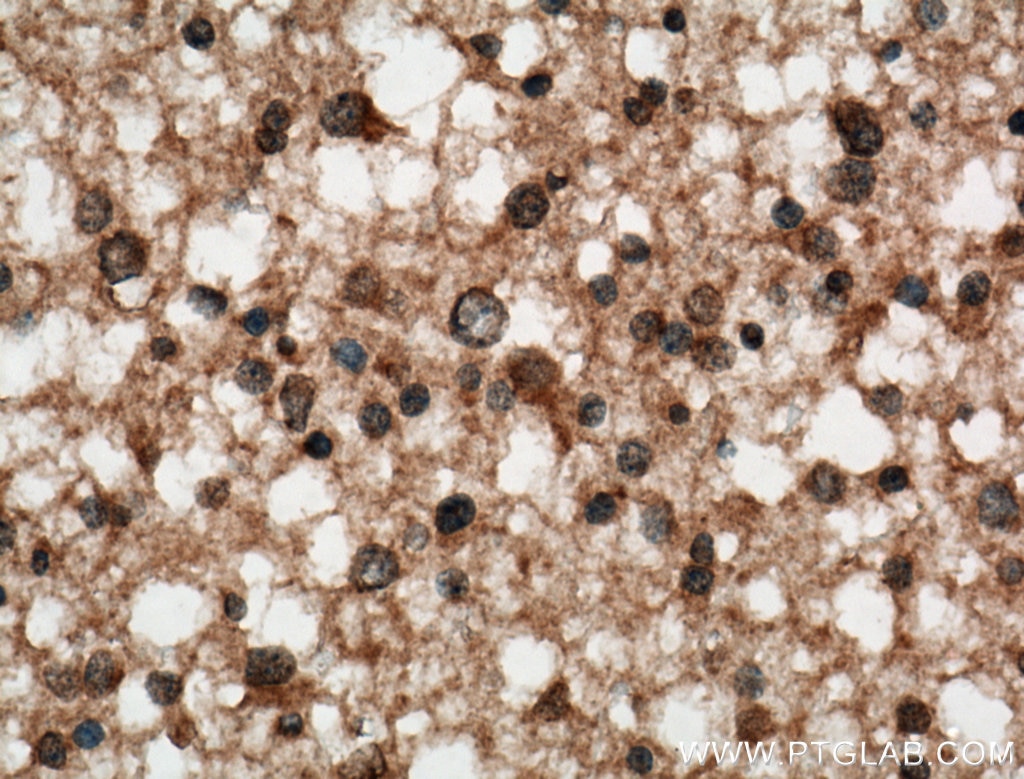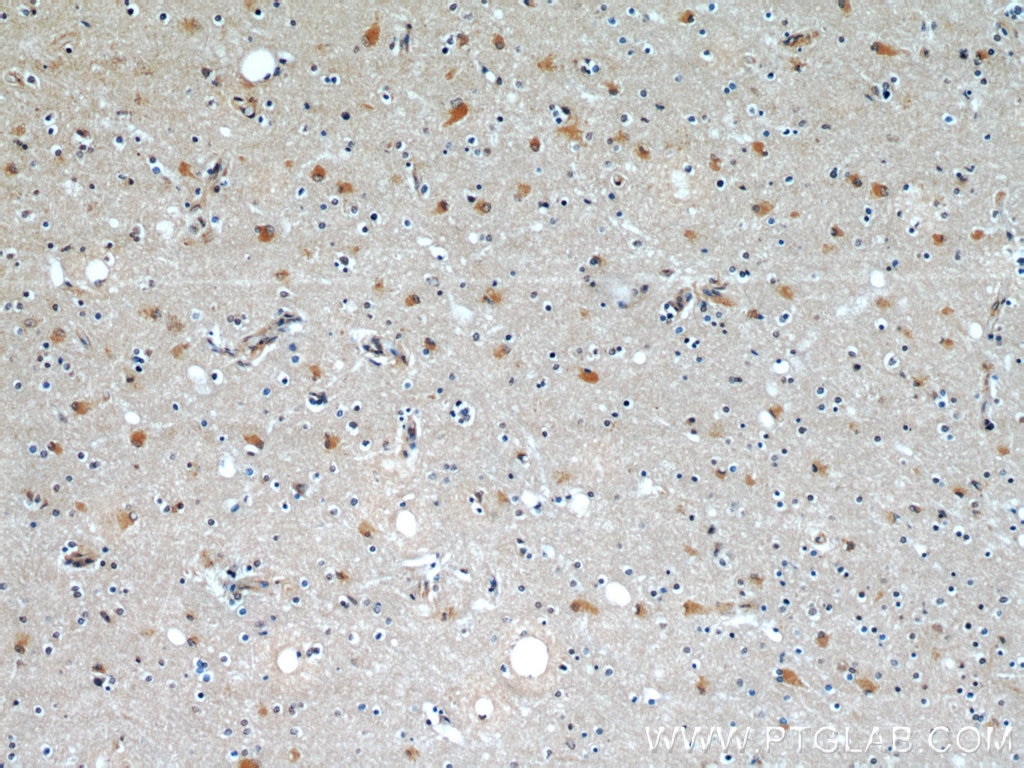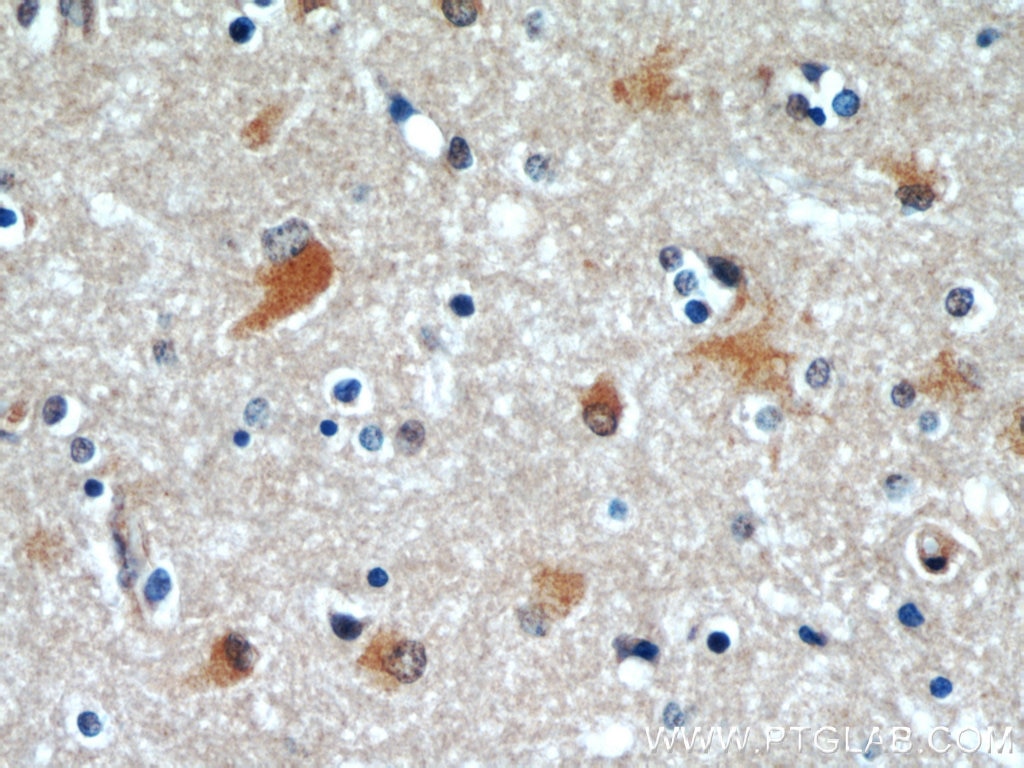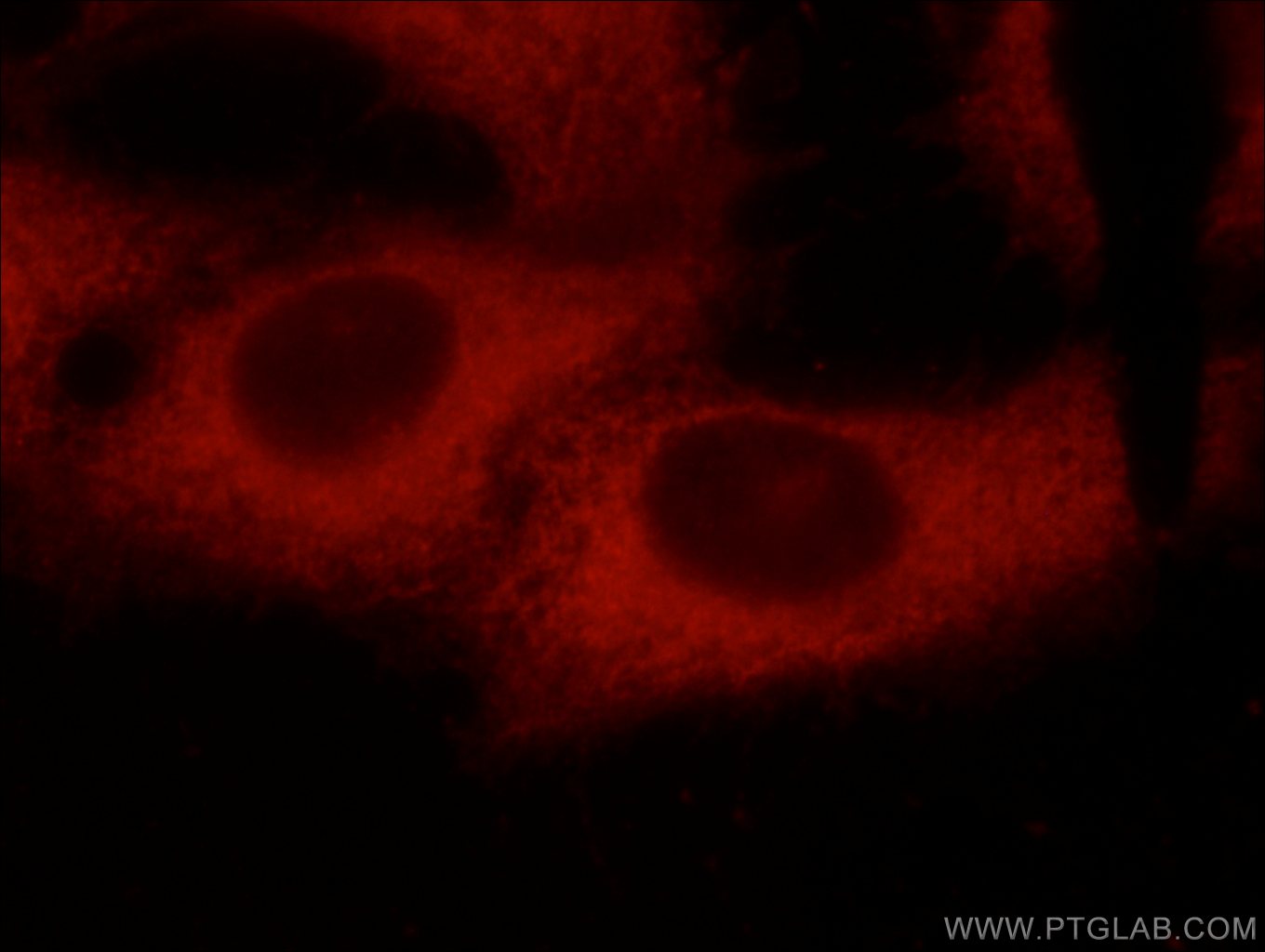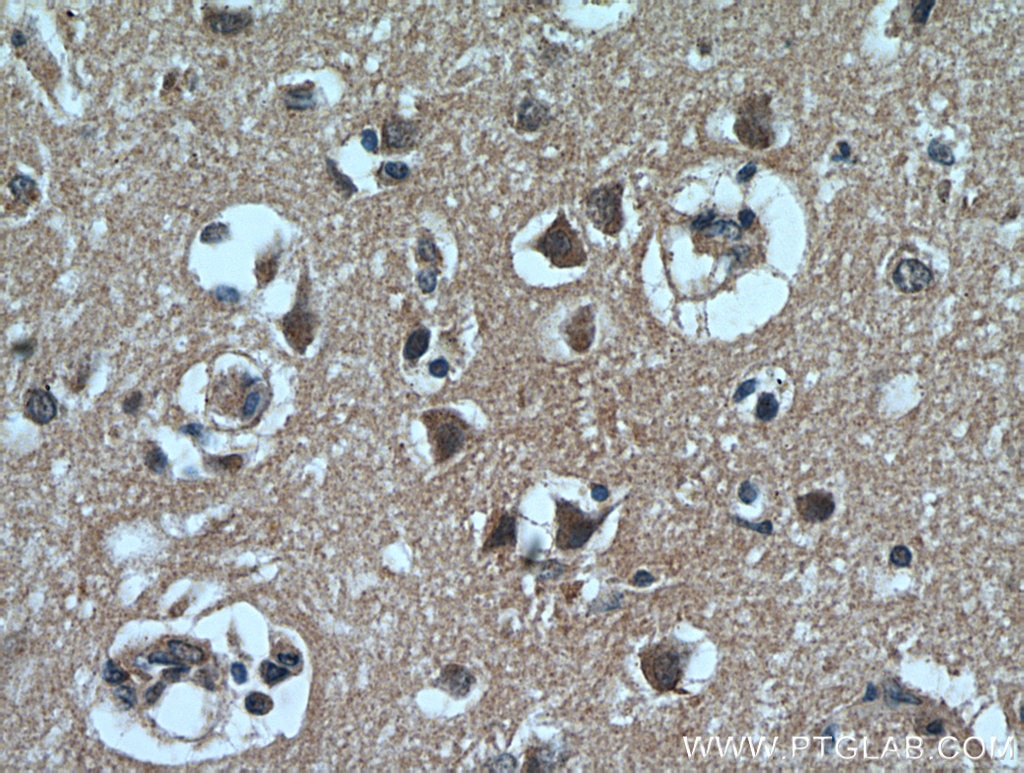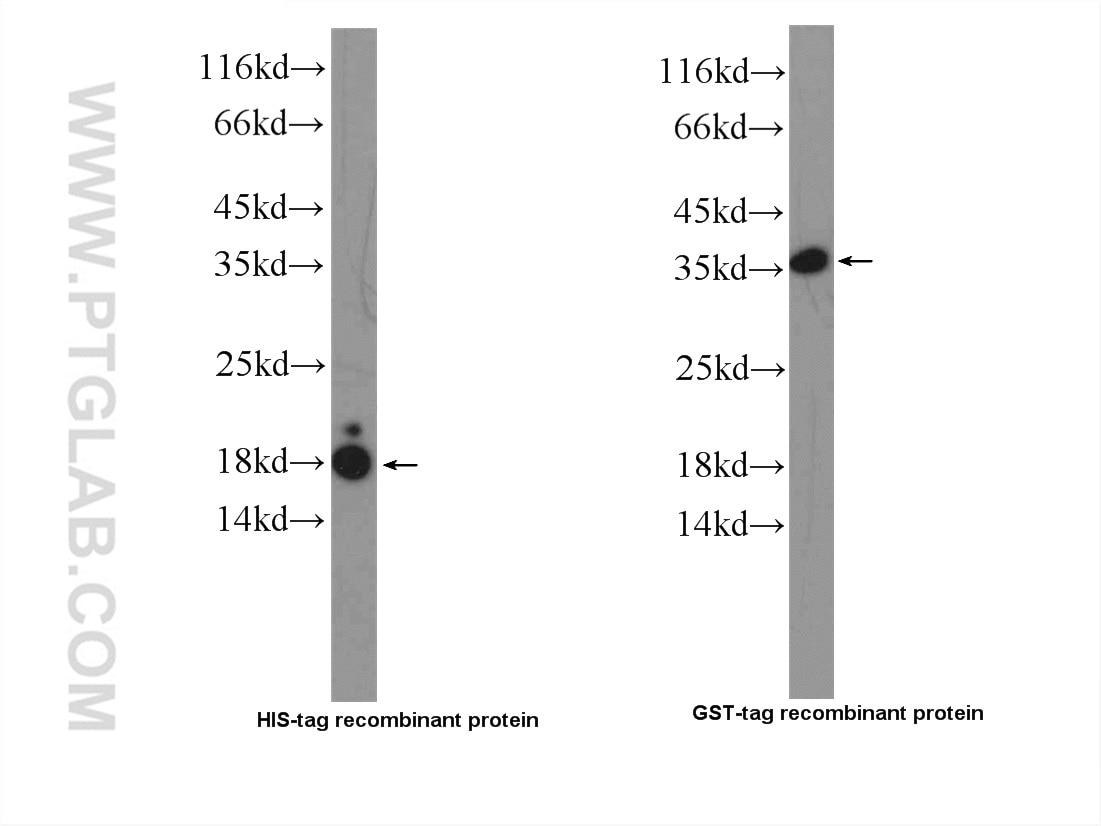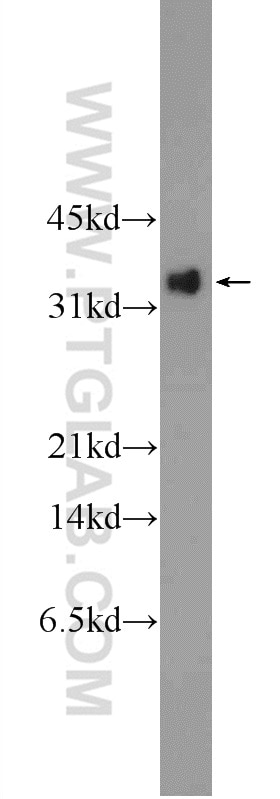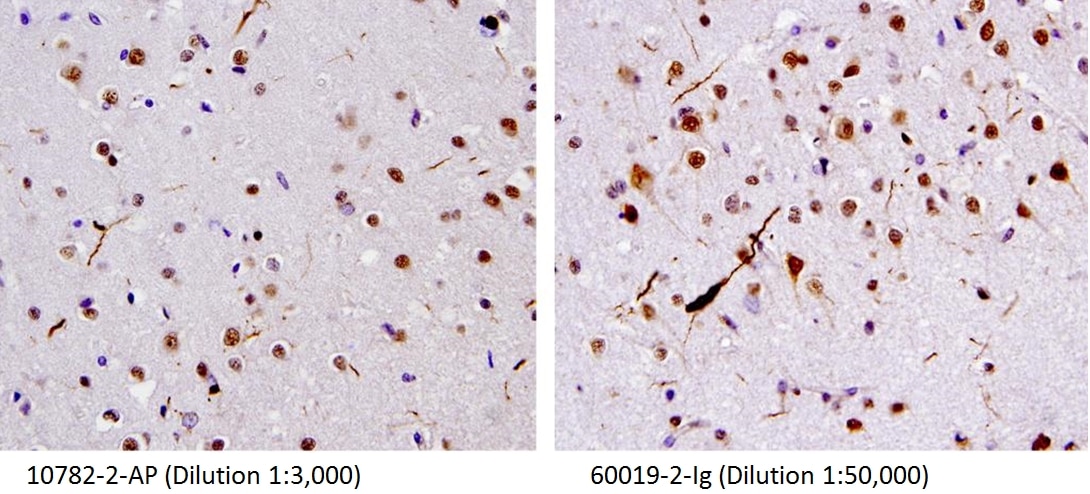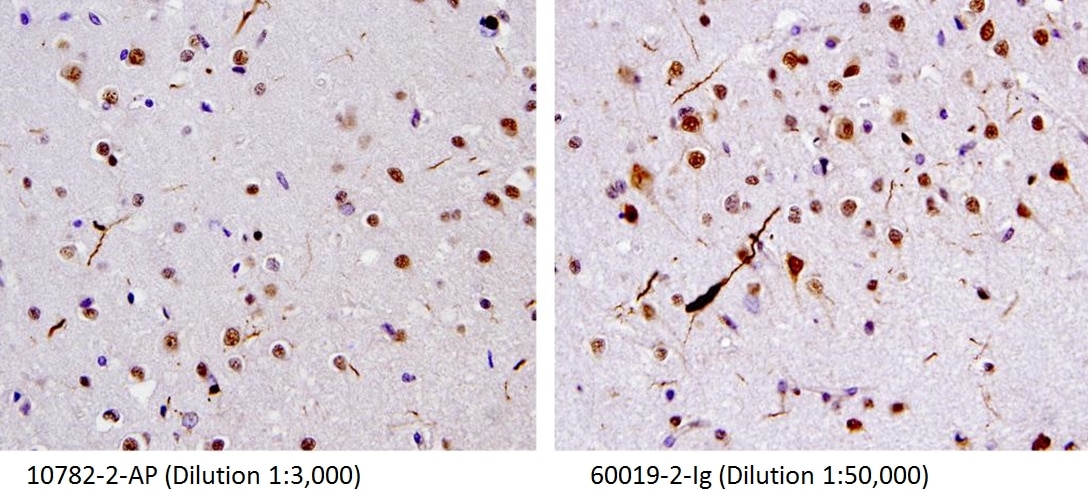Anticorps Monoclonal anti-C9orf72
C9orf72 Monoclonal Antibody for IF, IHC, IP, WB, ELISA
Hôte / Isotype
Mouse / IgG2a
Réactivité testée
Humain, rat, souris
Applications
WB, IP, IHC, IF, ELISA
Conjugaison
Non conjugué
CloneNo.
3D2H6
N° de cat : 66140-1-Ig
Synonymes
Galerie de données de validation
Applications testées
| Résultats positifs en WB | tissu cérébral humain, cellules C6, cellules Neuro-2a |
| Résultats positifs en IP | cellules C6 |
| Résultats positifs en IHC | tissu de gliome humain, tissu cérébral humain il est suggéré de démasquer l'antigène avec un tampon de TE buffer pH 9.0; (*) À défaut, 'le démasquage de l'antigène peut être 'effectué avec un tampon citrate pH 6,0. |
| Résultats positifs en IF | cellules SH-SY5Y |
Dilution recommandée
| Application | Dilution |
|---|---|
| Western Blot (WB) | WB : 1:500-1:1000 |
| Immunoprécipitation (IP) | IP : 0.5-4.0 ug for 1.0-3.0 mg of total protein lysate |
| Immunohistochimie (IHC) | IHC : 1:500-1:2000 |
| Immunofluorescence (IF) | IF : 1:10-1:100 |
| It is recommended that this reagent should be titrated in each testing system to obtain optimal results. | |
| Sample-dependent, check data in validation data gallery | |
Applications publiées
| WB | See 4 publications below |
| IHC | See 2 publications below |
| IF | See 1 publications below |
Informations sur le produit
66140-1-Ig cible C9orf72 dans les applications de WB, IP, IHC, IF, ELISA et montre une réactivité avec des échantillons Humain, rat, souris
| Réactivité | Humain, rat, souris |
| Réactivité citée | rat, Humain, souris |
| Hôte / Isotype | Mouse / IgG2a |
| Clonalité | Monoclonal |
| Type | Anticorps |
| Immunogène | C9orf72 Protéine recombinante Ag21080 |
| Nom complet | chromosome 9 open reading frame 72 |
| Masse moléculaire calculée | 481 aa, 54 kDa |
| Poids moléculaire observé | 55 kDa |
| Numéro d’acquisition GenBank | BC020851 |
| Symbole du gène | C9orf72 |
| Identification du gène (NCBI) | 203228 |
| Conjugaison | Non conjugué |
| Forme | Liquide |
| Méthode de purification | Purification par protéine A |
| Tampon de stockage | PBS avec azoture de sodium à 0,02 % et glycérol à 50 % pH 7,3 |
| Conditions de stockage | Stocker à -20°C. Stable pendant un an après l'expédition. L'aliquotage n'est pas nécessaire pour le stockage à -20oC Les 20ul contiennent 0,1% de BSA. |
Informations générales
C9ORF72 has a domain whith polymorphic hexanucleotide repeat (GGGGCC). The C9ORF72-hexanucleotide repeat expansions have been recently identified as genetic markers in amyotrophic lateral sclerosis (ALS) and frontotemporal lobar degeneration (FTLD). FTLD-TDP has five subtypes: Sporadic FTLD, GRN mutation FTLD, TARDBP mutation FTLD, VCP mutation FTLD and C9ORF72 mutation FTLD. The C9ORF72 repeat expansions may indicate a worse prognosis in ALS. Human C9ORF72 has some isoforms with MW 54-60 kDa and 25-30 kDa. Mouse C9orf72 has some isoforms with MW 50-60 kDa and 35 kDa.
Protocole
| Product Specific Protocols | |
|---|---|
| WB protocol for C9orf72 antibody 66140-1-Ig | Download protocol |
| IHC protocol for C9orf72 antibody 66140-1-Ig | Download protocol |
| IF protocol for C9orf72 antibody 66140-1-Ig | Download protocol |
| IP protocol for C9orf72 antibody 66140-1-Ig | Download protocol |
| Standard Protocols | |
|---|---|
| Click here to view our Standard Protocols |
Publications
| Species | Application | Title |
|---|---|---|
Acta Neuropathol Commun Novel antibodies reveal presynaptic localization of C9orf72 protein and reduced protein levels in C9orf72 mutation carriers. | ||
Sci Rep Dual-gRNA approach with limited off-target effect corrects C9ORF72 repeat expansion in vivo. | ||
Amyotroph Lateral Scler Frontotemporal Degener Immunohistochemical detection of C9orf72 protein in frontotemporal lobar degeneration and motor neurone disease: patterns of immunostaining and an evaluation of commercial antibodies. | ||
Acta Neuropathol Sense-encoded poly-GR dipeptide repeat proteins correlate to neurodegeneration and uniquely co-localize with TDP-43 in dendrites of repeat-expanded C9orf72 amyotrophic lateral sclerosis. | ||
Animal Model Exp Med Knock in of a hexanucleotide repeat expansion in the C9orf72 gene induces ALS in rats. | ||
